1. Introduction
Milk teeth, or primary teeth, are the foundation of a child’s oral health. While they will eventually be replaced by permanent teeth, the health of milk teeth plays a crucial role in a child’s overall health, nutrition, speech development, and social behavior. When a child develops cavities in their milk teeth, many parents may hesitate, thinking that these teeth will soon fall out and, therefore, don’t require much attention. However, if milk teeth cavities are not treated in a timely manner, they can not only affect the child’s oral health but also impact the growth of permanent teeth, the child’s psychological state, and their future dental development.
This article will explore whether milk teeth cavities need to be treated, analyzing the causes of milk teeth cavities, the necessity of treatment, available treatment methods, and the potential consequences of not treating cavities in milk teeth. Through a comprehensive discussion, parents will gain a better understanding of the importance of treating cavities in milk teeth and how to address their child’s dental issues in a scientifically sound manner.
2. Causes of Milk Teeth Cavities
Cavities in milk teeth, also known as dental caries or primary tooth decay, typically occur on the surfaces of the teeth when bacteria, sugar, and acidic substances are present in the mouth for prolonged periods. Milk teeth are more susceptible to decay because they are composed of softer enamel than permanent teeth. The primary causes of cavities in milk teeth are as follows:
2.1 Poor Dietary Habits
Dietary habits play a critical role in children’s oral health. Foods and drinks that are high in sugar or acid, such as candies, chocolates, and fruit juices, provide nutrients for bacteria in the mouth. These bacteria, in turn, produce acids that erode tooth enamel, leading to cavities. Many children don’t brush their teeth after eating snacks, leaving sugar residues in the mouth that further promote the development of cavities.
2.2 Improper Oral Hygiene
One of the leading causes of milk teeth cavities is improper oral hygiene. Many children do not develop the habit of brushing their teeth regularly, or they may not brush thoroughly. This leads to food particles and bacteria accumulating on the teeth, forming dental plaque. If plaque remains on the teeth for too long, it can harden into tartar, leading to tooth decay.
2.3 Genetic Factors
Research has shown that genetic factors can also influence a child’s dental health. Some children may inherit weaker tooth enamel or a higher susceptibility to demineralization, making them more prone to cavities. Genetic factors may make certain children more vulnerable to tooth decay compared to others.
2.4 Diet and Drinking Habits
In addition to sugary foods, a lack of essential minerals like calcium and phosphorus in the diet can also affect tooth health. Since milk teeth are composed of softer enamel, they are more prone to external damage. If a child’s diet lacks sufficient calcium or vitamin D, their teeth’s resistance to cavities is weakened. Moreover, long-term consumption of water with low fluoride content or improper bottle-feeding habits can make milk teeth more susceptible to decay.
3. Symptoms and Diagnosis of Milk Teeth Cavities
Milk teeth cavities may not be easily detectable in the early stages, so regular checks on a child’s oral health are essential. If your child shows the following symptoms, it could indicate the presence of cavities:
3.1 White Spots on the Teeth
In the early stages of tooth decay, white spots or patches may appear on the surface of the teeth. These spots are caused by demineralization, which means the minerals in the tooth enamel are being lost. If addressed in time, these white spots can be remineralized, but if ignored, they can progress into deeper cavities.
3.2 Dark Spots or Holes on the Teeth
As cavities progress, dark spots or holes may appear on the tooth surface. This indicates that the tooth’s hard tissue has been damaged. If left untreated, the cavity will continue to expand, leading to the collapse of the tooth or even tooth loss.
3.3 Tooth Sensitivity or Pain
If the cavity reaches the tooth’s nerve, the child may experience sensitivity to hot or cold food, or even pain. Especially when consuming sweet or acidic foods, the child may complain of discomfort. Tooth pain usually means the cavity has reached a significant depth and may require more complex treatment.
3.4 Bad Breath
Children with untreated cavities may develop bad breath. This is because bacteria in the mouth break down food residues, producing unpleasant gases. Bad breath is often a sign that cavities are present and indicates the need for treatment.

4. The Necessity of Treating Milk Teeth Cavities
4.1 Risks of Not Treating Milk Teeth Cavities
Many parents are hesitant to treat cavities in milk teeth, thinking that these teeth will fall out eventually and treatment isn’t worth it. However, if cavities are not treated in time, they can lead to a range of problems for the child:
- Impact on Permanent Teeth Development: The health of milk teeth directly affects the growth of permanent teeth. If milk teeth are lost too early due to cavities, permanent teeth may not have enough space to grow properly, potentially leading to crooked or misaligned teeth.
- Pain and Infection: Cavities that are left untreated will continue to grow, leading to dental pulp infection or abscesses around the tooth root. This can cause severe pain and may affect the child’s overall health, potentially leading to further oral complications.
- Impact on Chewing and Speech Development: Milk teeth are essential for chewing food and for speech development. Cavities can make chewing difficult, affecting a child’s ability to properly absorb nutrients. Additionally, the health of milk teeth is crucial for proper speech development, especially for younger children who are learning to speak.
- Psychological Impact: Cavities can affect a child’s self-esteem, especially if they have noticeable dental issues. Over time, this can lead to social anxiety or feelings of self-consciousness, which may affect the child’s confidence and interactions with peers.
4.2 Benefits of Treating Milk Teeth Cavities
Timely treatment of cavities not only alleviates pain but also prevents the adverse effects mentioned above. The benefits of treating cavities in milk teeth include:
- Maintaining Tooth Function: Treating cavities helps preserve the function of milk teeth, allowing the child to chew properly and obtain adequate nutrition.
- Preventing Tooth Misalignment: Treating cavities in milk teeth helps maintain their proper position, providing enough space for permanent teeth to emerge correctly.
- Preventing Oral Infections: Treating cavities promptly prevents the spread of infection and reduces the risk of more serious oral health problems, such as dental abscesses and pulpitis.
- Pain Relief: After treatment, the child will experience relief from pain, which will improve their overall comfort and quality of life.
- Psychological Health: Children who receive treatment for their cavities are less likely to feel self-conscious or embarrassed about their teeth, which helps boost their confidence and emotional well-being.
5. Treatment Options for Milk Teeth Cavities
5.1 Fillings
The most common method of treating milk teeth cavities is fillings. The decayed portion of the tooth is removed, and the cavity is filled with dental materials such as composite resin, silver amalgam, or glass ionomer. Depending on the size and depth of the cavity, the dentist will choose the appropriate material and technique.
- Composite Resin Fillings: These are the most commonly used fillings today, as they provide good aesthetics and durability, making them suitable for treating cavities in the front teeth.
- Silver Amalgam Fillings: These are strong and durable, making them ideal for fillings in the back teeth. However, they are not as aesthetically pleasing as composite resins and are typically used in less visible areas.
5.2 Pulp Therapy
If the cavity has reached the tooth’s pulp (nerve), pulp therapy may be necessary. This involves removing the infected pulp tissue, disinfecting the area, and filling it to prevent further infection. Pulp therapy in milk teeth is usually simpler than in permanent teeth but should be done under a dentist’s supervision.
5.3 Crowns
For extensive cavities or severe tooth damage, a dental crown may be used to restore the tooth’s shape and function. Crowns completely cover the affected tooth, providing protection and maintaining its appearance. Crowns are often used when the cavity is too large to be treated with a filling.
6. Preventing Milk Teeth Cavities
- Promote Good Oral Hygiene Habits: Parents should start teaching children the importance of brushing their teeth from an early age. Encouraging children to brush twice a day with fluoride toothpaste can help prevent cavities.
- Limit Sugary Foods: Reducing the intake of sugary foods and drinks, especially before bedtime, can significantly reduce the risk of cavities.
- Regular Dental Checkups: Regular dental visits are essential for early detection of cavities. A dentist can monitor the health of the child’s teeth and provide professional cleanings and fluoride treatments to protect the teeth.
- Use Fluoride: Using fluoride toothpaste and drinking fluoridated water can help strengthen tooth enamel and make teeth more resistant to decay.
7. Conclusion
The health of milk teeth is essential not only for a child’s ability to chew and speak but also for the development of permanent teeth and overall oral health. Therefore, milk teeth cavities should not be neglected. Timely treatment can relieve pain, prevent further oral complications, and ensure that the child’s teeth develop properly. Parents should foster good oral hygiene habits from an early age, avoid sugary snacks, and schedule regular dental visits to ensure the child’s oral health is well-maintained.











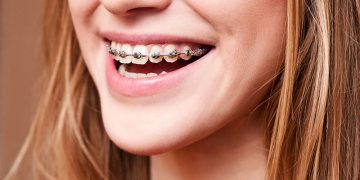
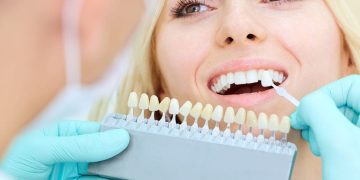




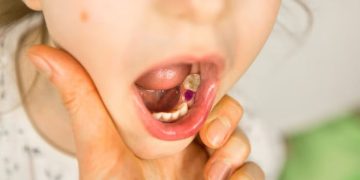
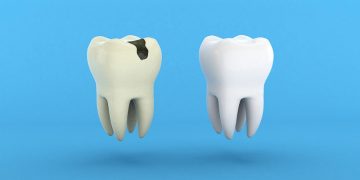






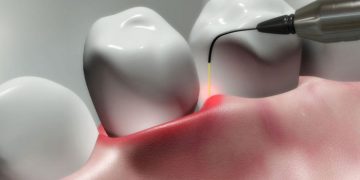




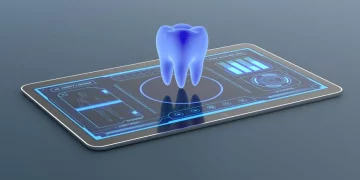














Discussion about this post